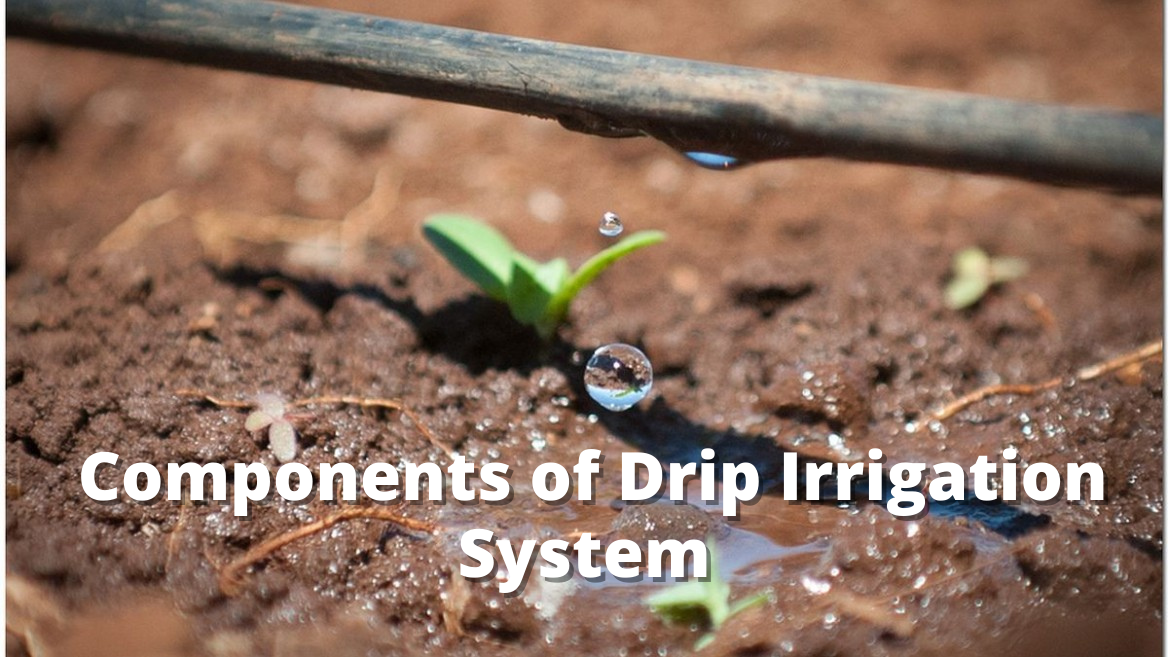Main Component of Drip Irrigation Systems

1. Water Source
There are mainly two types of Water sources
Groundwater and Surface water
Surface waters
2. Pumps and motors
The pumping devices are required to provide the pressure to pass water through the control head, different accessories and pipe network and then to the emitting devices at desired pressure. The pressure can be developed by using the elevated tanks or pumps. The elevated tanks can provide the pressure to the small system with micro tubes as the emitting devices. Other systems need the pumps. The pumps to be used may be centrifugal pump, submersible pump, turbine pumps. They may be powered by the electric motor or the diesel pump.
3. Filter
Filtration is the key to the success or failure of a drip irrigation system. The narrow water passage or pathways in the emitters of the drip irrigation system are susceptible to clogging by suspended matter and chemicals that precipitate from the irrigation water. The clogging of the emitters can be partial or full causing the reduction in the emission uniformity and rated discharge of the emitters
Types of filters
- Gravel Filter (Sand Filter): This type of filter is essential for open reservoir, when algae growth take place. The dirt is stopped and accumulated inside the media in the filter. Gravel filter consist of small basalt gravel or sand (usually 1-2 mm Dia) placed in cylindrical tank, made of metal. Water enters form the top and flows through the gravel while leaving the dirt in the filter. The clean water is discharge at the bottom. The filter is cleaned by reversing the direction of flow.
- Screen Filter: The screens are usually cylindrical shape and are made of non-corrosive metal or plastic material.
- Disc Filter: The filtration elements are grooved plastic disc, which are piled together around a telescopic core, acceding to the desired degree of filtration. Both sides of the discs are grooved and the grooves cross each other when piled up and frightened together. The water passes through the filter from the outside to the inside. There is no danger of filter tearing. The filtration is affected in two stages: the larger outer surface operates as a screen filter and collects the larger particles. The grooves inside the disc allow the adhesion of fine particles, mainly organic matter. The filter element can be cleaned easily. When opening the core, the discs are released and can easily be rinsed under running water.
4.Main Line
Pipelines carry water through the entire irrigation system, from the pump through the filters, the valves and onward to the drippers. They are normally made of HDPE/PVC pipes in order to minimize corrosion and clogging. Usually, they are placed below the ground, so that they will not interfere with cultivation practices. Their diameter is based on the system flow capacity. The velocity of flow in mains should not be greater than 1.8 m/s.
5. Submain
The Submain conveys the water mainline to the laterals. They are also buried in ground below and made of HDPE/PVC. The diameter of Submain is usually smaller than main line. There may be number of Submain from one mainline depending upon the plot size and crop type.
6. Lateral /Dripline
Driplines are small diameter flexible pipes or tubing made of low density polyethylene (LDP) or liner low density polyethylene (LLDPE) and of 12 mm, 16mm, and 20 mm size. Their colour is black to avoid the algae growth and effect of ultra- violet radiation. They can withstand the maximum pressure of 2.5 to 4 kg/cm2. They are connected to Submain at predetermined distance. The pressure variation between two extreme points of lateral should not be more than 15-20 % and discharge variation should not be more than 10%. On slopping ground, the laterals are placed along the contour with 1% extra length for sagging purpose.
7. Drippers Emitters
Emitters are classified into two types
· Non-pressure compensating emitters with this type of emitter, the higher the water pressure coming from your faucet or valve, the higher the flow will be coming out of each emitter.
· Pressure-compensating emitters – These are ideal for achieving even water distribution when your drip irrigation system runs long distances. They are a good choice when you are planting in long rows or when you are dealing with uneven or hilly terrain.
It is the main component of Drip irrigation system for discharging water from lateral to the soil. i.e. to the plants. There are various types and size of drippers, based on different operating principles. They are made of plastic, such as polythene or polypropylene. Their discharge range is between 1-15 ph. Each dripper has it’ s own characteristics, advantages and disadvantages which determines its use.
The drippers can be classified according to working principle, discharge, type, structure, working pressure, designation, durability, regulated and non-regulated discharge.
The main principle when planning a dripper is to achieve the minimum discharge with maximum size of water passage. The large water passage is essential to minimize clogging and provide the minimum discharge for cheapest set-up. Therefore, an emitter is necessary, (a hole in a pipe is not a dripper). Emitters may be on the lateral or inside to lateral, accordingly they are called on line or inline emitters.
8. Controls Valves (Ball Valves)
These are used to control the flow through particular pipes. Generally, they are installed on filtration system, mainline, and on all Submain. They are made up of gunmetal, PVC cast iron
9. Flush Valve:
It is provided at the end of each sub main to flush out the water and dirt’s.
10. Air valve
It is provided at the highest point in the main line to release the entrapped air during the start of the system and to break the vacuum during shut off. It is also provided on Submain if Submain length is more.
11. Non-Return Valve
It is used to prevent the damage of pump from flow of water hammer in rising main line.
12. Water Meters
Water meters monitor and record the amount of water moving through a pipe where the water meter is installed. It is used to measure discharge of system.
Pressure Gauge: Pressure gauges monitor water pressure in the system and ensure operating pressure remains close to the recommended or desired values. Based on where the pressure gauge is installed, it will measure water pressure in a various range, from 0 to 10 kg/cm2 near the pump to 0-2 kg/cm2 at the end of drip lateral. Pressure gauges may be installed at set points (near the pump, before and after the filter, near the field). They can also be mounted as portable devices and installed temporarily at the end of a drip lateral.
Gromate and Take-off: These are used to connect the lateral to Submain. A hole is punched with hand drill of predetermined size in Submain. Gromate is fixed into the hole. Take off is pressed into the hole. Take off is pressed into the gromate with take of punch upto the step provided. Gromate acts as a seal. The sizes are different for 12 mm, 16mm, and 20 mm lateral.
End Caps (End Sets): They are used to close the lateral ends, Submain ends or mainline ends. Sub mains and mains are preferably provided with flush valve. They are convenient for flushing the line.
Fertilizing System: This category of parts delivers important nutrients to crops while the irrigation system is running. Injectors are set up inline so that when the timer starts the irrigation cycle, a precise amount of fertilizer will be carried into the main irrigation line.
There are various systems available in market
Fertilizer tank
Piston motor injector
Venturi injector
Electric dosing pump

